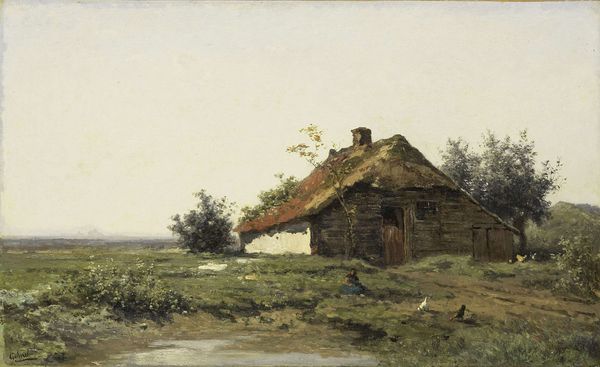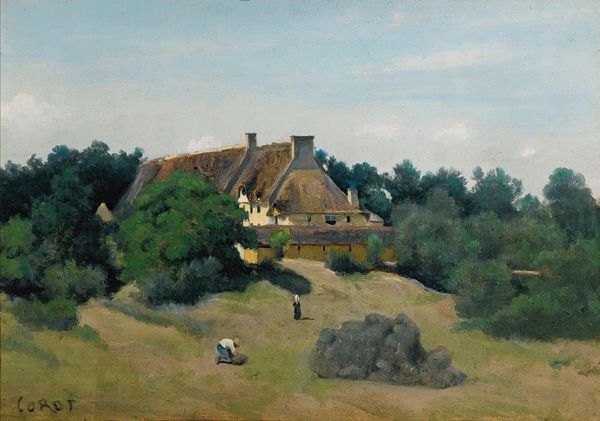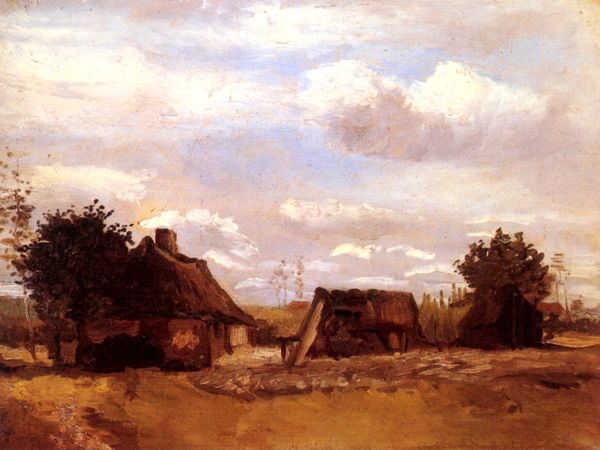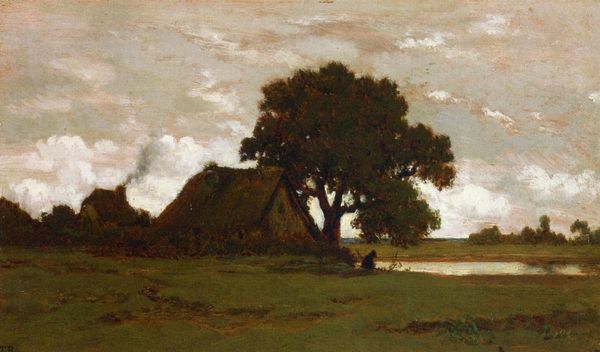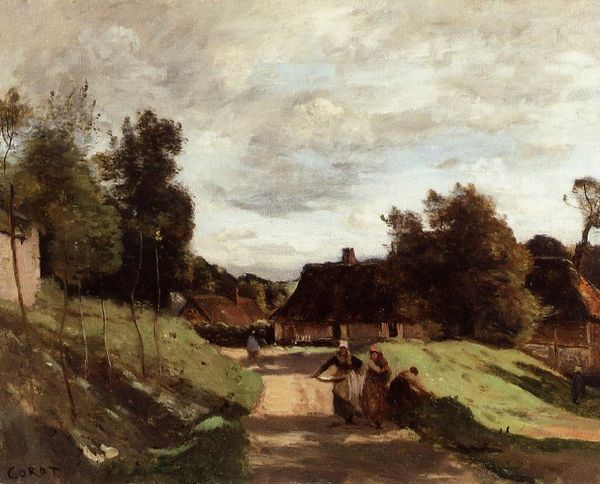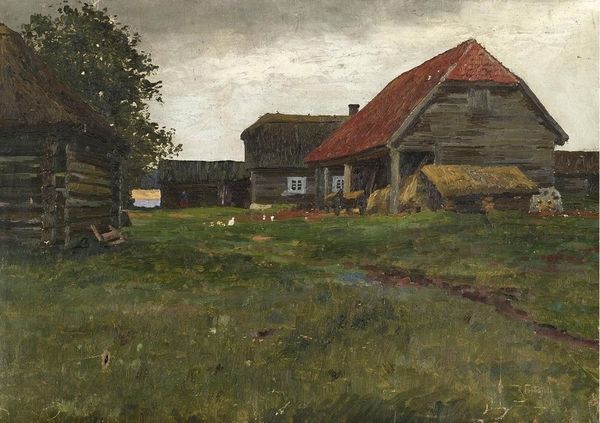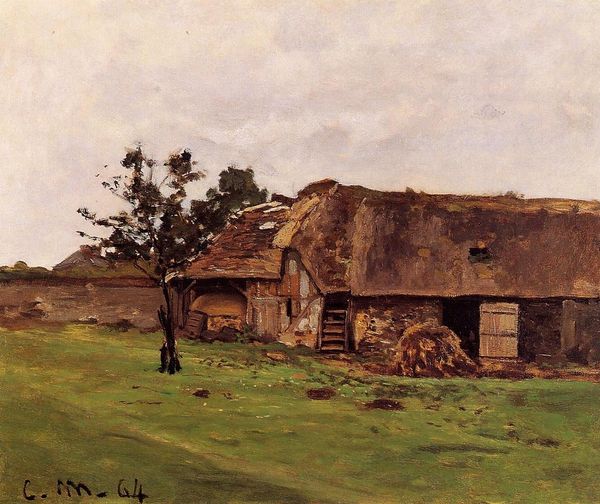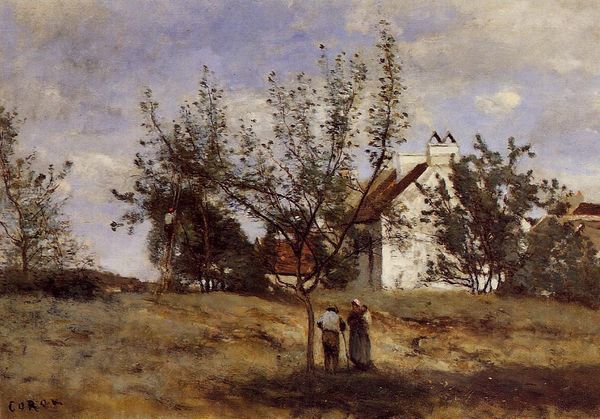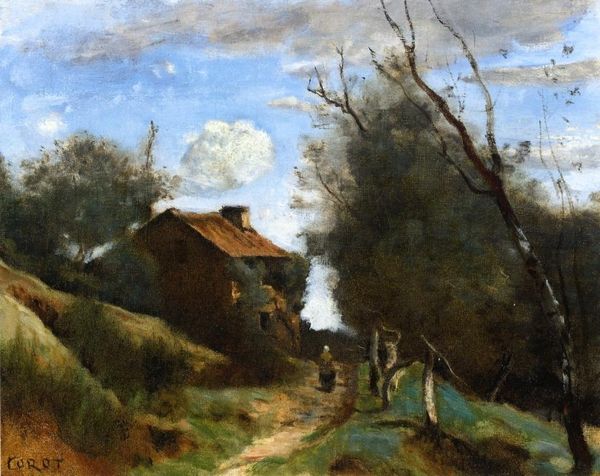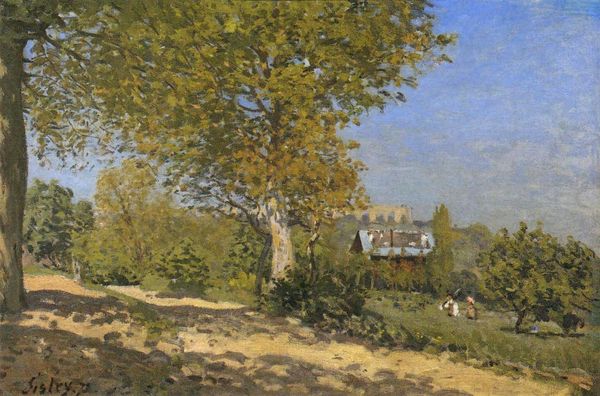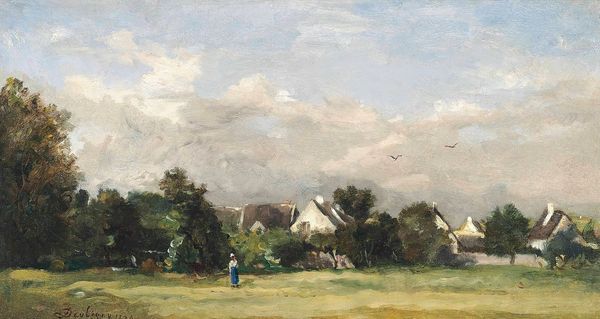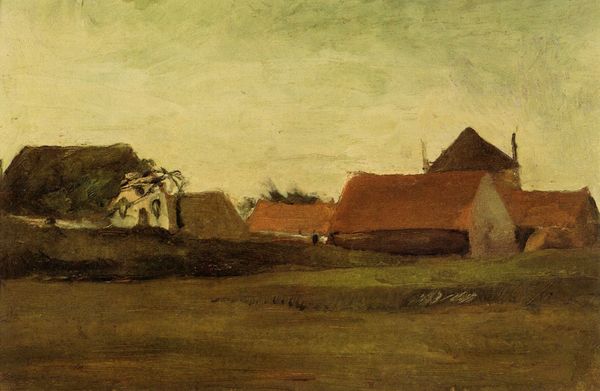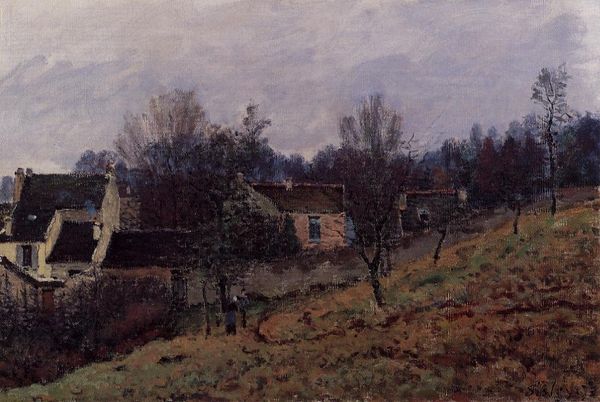
Dimensions: 17.8 x 30.2 cm
Copyright: Public domain
Editor: So, this is Corot’s “Archicourt, Near Arras,” painted in 1857. It’s an oil painting of a humble building, mostly greens and browns. There’s a certain…quietness to it. What do you see in this piece? Curator: I see more than just quiet. I see a deliberate placement of the peasant within the landscape. How might we interpret this in the context of 19th-century France? The shift from rural to urban life, the growing industrialization... This landscape isn’t just a backdrop, it's a stage. Editor: A stage? Interesting. So you see the figures, the building, and fields as representing broader social forces at play? Curator: Precisely! Consider the power dynamics embedded in landscape painting itself. Who owns this land? Who toils on it? Corot offers a vision of harmony. Is this reality, or is it an idealized version, perhaps a critique of the social changes he was witnessing? Editor: That makes me think about how other artists at the time were focusing on similar themes, but sometimes with a darker, more critical tone. Courbet, for example. Curator: Exactly! By placing these works in dialogue, we start to unravel the complexities of the era and question whose voices were truly being represented. Is Corot's vision accessible to everyone? Whose perspective is privileged in his romantic, "harmonious" interpretation of nature? Editor: It sounds like by examining what Corot *omits*, we reveal important insights, which adds so much more nuance. I’d never have thought of that by just looking at the landscape. Curator: It’s all about situating the work within its historical, social, and political contexts to foster a more profound and relevant connection. It helps us reflect on the ongoing negotiations around class, labor, and land ownership.
Comments
No comments
Be the first to comment and join the conversation on the ultimate creative platform.
